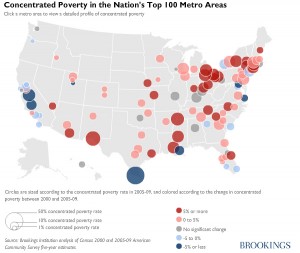Extending Unemployment Insurance Benefits
The Economic Policy Institute estimates that an extension of the long-term unemployment insurance benefit program set to expire at the end of 2011 would help save or create 560,000 jobs and preserve or generate $72 billion in GDP through the end of 2012. From the analysis …
Spending $45 billion on unemployment insurance extensions in 2012 would increase GDP by an estimated $72 billion, raising our $15.2 trillion GDP by roughly 0.5 percent. This increase in economic activity translates into roughly 560,000 payroll jobs. In other words, extending the federally funded unemployment insurance extensions through 2012 would not only extend a lifeline to the families of millions of long-term unemployed workers, it would also generate spending that supports well over half a million jobs. If this program is discontinued, the economy will lose these jobs.
The study also weighs in on the issue of whether the benefit extension would cause some people not to seek work.
Is it possible that continuing the UI benefit extensions could weaken the labor market by providing a disincentive for UI recipients to return to work? The answer is a very clear “no.” In the most careful study to date on the effects of UI extensions on job searches in the Great Recession, Jesse Rothstein (2011) finds that the unemployment rate in December 2010 would have been about 0.3 percentage points lower if UI benefits had not been extended. The unemployment rate that month was 9.4 percent, up from 5 percent in December 2007, an increase of 4.4 percentage points. Thus, he finds that a very small fraction—0.3 out of 4.4—of the increase in the unemployment rate during the Great Recession and its aftermath can be attributed to the UI benefit extensions. Furthermore, Rothstein shows that at least half of the extension-induced increase in the unemployment rate is due to the fact that workers who receive UI benefits are less likely to give up looking for work. His estimates suggest that less than 0.2 percentage points of the 4.4 percentage point increase in the unemployment rate in the three years from December 2007 to December 2010 was due to an extension-induced reduction in the rate at which workers get a new job.


 Email Sign-Up
Email Sign-Up RSS Feed
RSS Feed